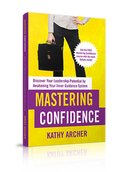The Inner Work of Leadership: Be Yourself and Lead with AuthenticityWomen leading nonprofit organizations know that leading with authenticity is at the core of effective leadership, or maybe they don't! In a world where we often feel the need to armour up, put on masks, and present facades, embracing our true selves can be terrifying and also a transformative experience. In my work, I teach four fundamentals of leadership. Let me cover them quickly here so you can create a plan to lead more effectively and feel good about yourself when you do! Nonprofit Leaders Discover The Power of Being True to Yourself1. Be YourselfI spent many years armouring up, putting on a face or feeling like there was a right way to lead. In Mastering Confidence: Discover Your Leadership Potential by Awakening Your Inner Guidance System. At times, I felt like I, figuratively and more often than not literally, suited up to go to work and then stripped away the layers when I got home. Sound familiar? But it's more than just the clothes we wear. It's the style, approach and manner we bring to our leadership. True leadership begins with authenticity. To be our best selves, we need to do the inner work of unmasking ourselves, shedding the armour, and embracing our genuine selves. That starts with identifying your values, beliefs, strengths and quirks and learning to be comfortable with all of them. That's the work of Being Yourself 2. Develop YourselfContinuous personal and professional development is the heartbeat of excellent leadership. Whether you're battling a lack of confidence or, quite frankly, don't know how to do 1-1 supervision, the journey of personal and professional development in leadership never truly ends. Strong and authentic leaders commit to ongoing personal and professional development. They have a plan for how they are growing and developing themselves on the inside and how they tactically do their day-to-day work. That's the work of Developing Yourself. 3. Take Care of YourselfLeadership isn't just about guiding others; it's about leading yourself first. Self-care plays a critical role in maintaining your composure, being able to focus, and being decisive. After all, you can't pour from an empty cup. Strong leaders develop practical strategies for ensuring their minds and bodies are well-equipped to handle the demands of leadership. That's the work of Taking Care of Yourself. 4. Teach Others to Do the SameTrue leaders empower those around them to embrace authenticity, continuous growth, and self-care. It starts with you, though. You can only teach it effectively if you do it. But when you do help others to unmask, develop, and care for themselves, it creates an engaged culture of loyal team members. Yes, we need to manage them, but inspiring leaders do more than that! Effective leaders learn to motivate, coach and mentor their team members. That's the work of Teaching Others to Do the Same. Learning to lead with excellenceIf you want to discover how to excel in leadership, explore how you can strengthen those fundamental strategies in how you lead. You'll learn more in the podcast series Invest in Your Leadership Excellence.
LISTEN NOW! Remember to subscribe on whichever channel is your favourite so you don't miss all 4 episodes in the series. Leading with authenticityRemember, leadership is not just a position, title or hat you put on when you show up at work each day. Leadership is a journey of self-discovery and growth. It is a personal growth journey! Embrace your authenticity, invest in your development, prioritize self-care, and lead with excellence and in a way that feels good! Do the inner work! It's worth it! p.s. If you want help doing the inner work so you can grow both personally and professionally, join The Training Library today! If you've been meaning to
NOW is the time to plan HOW you will do that 👆🏻 growth.
0 Comments
Understanding Pre-Meeting AnxietyIf you are a nonprofit leader and have a tough meeting coming up, you will want to feel empowered going into it. Tune into Sandra's story to build your confidence going into challenging conversations! Sandra's Story: Facing the Fear of a Tough MeetingWhen Sandra came to our coaching call, she was preparing for a meeting with the Executive Director about her performance. Sandra was dreading the meeting. She knew her boss would make her feel stupid, small and even scared.
But that's not how Sandra anticipated the meeting was really going to go down! Sandra knew she would feel attacked by her bossSandra knows that "help" from her boss is typically in the form of them pointing out:
Sandra's anxious thoughts were almost out of controlEver since Sandra's boss had scheduled the meeting, Sandra had been rolling around the worst-case scenario in her mind. She imagined being fired on the spot, being raked over the coals and being belittled, berated and bullied. Hence, the knot in her stomach! Sandra had a history of not feeling supported by her bossIt's no wonder Sandra was dreading the meeting! Past meetings had not gone well. Most of what Sandra feared had happened in the past.
It was time for Sandra to change her perspectiveJust because that is how Sandra's ED has communicated in the past does not mean that Sandra has to believe it means she is incompetent or not cut out for leadership. Sandra can choose to pick between the well-intentioned but still hurtful comments and find out what's valuable in between those comments. Sandra took back control of her thoughtsWhether it is this conversation with her boss or another, Sandra gets to decide how she will proactively continue to grow and develop in her nonprofit leadership role. Shifting Your Mindset for ConfidenceSandra enlists the support of her nonprofit coachSandra brought this upcoming conversation to our coaching call. In past coaching sessions, we'd already talked about mindsets, perspectives and lenses, so she knew her mindset mattered most! To plan to feel more confident in the upcoming conversation, we took a look at the kinds of messages Sandra's boss might share:
The Power of Perspective: Changing Your MindsetLeadership MINDSET # 1If Sandra chose to see herself as flawed, she would take these kinds of comments to heart. Imposter Syndrome would take over, and the knot in her stomach would grow to a tightening in her chest. Sandra could see how her thoughts could snowball:
Leadership MINDSET #2 (THE BETTER OPTION)I invited Sandra to PAUSE, and take a breath. I asked what might happen if she chose to hear the messages differently. Sandra PONDERed and considered the comments above and then what else might be true:
Mindset # 2 helps Sandra feel more confidentSandra then used curiosity to PIVOT to new thoughts:
Instead of feeling beaten down by taking time to move through the Inner Guidance Cycle, Sandra felt back in control. She was ready to take the core of the feedback (too much overtime) and hear it for what it is—Feedback. Believing in Your Potential: The Foundation of ConfidenceHow does this help Sandra remove the knot in her stomach before the meeting?By knowing she has control of her thoughts, choosing how to hear messages and intentionally choosing not to take things personally in the meeting but focus on the content, Sandra lessened the emotional charge going into the meeting. When Sandra chooses her thoughts, she feels her confidence soar!I reminded Sandra that feeling confident in a meeting isn't about what someone else says or thinks. Sandra smiled and nodded. She's been reading Mastering Confidence. I know, she said, it's what I believe. How confident you FEEL starts with what you BELIEVE.What you believe about yourself is what matters most. I asked Sandra:
I reminded Sandra that if she believes those things, the tone with which her boss shares those messages in that meeting is less relevant than the content and what she chooses to hear, believe and take action on. Creating an If/Then Plan for ComposurePreparing for Triggers: Sandra's If/Then StrategyWhile feeling more confident, Sandra was still worried about being triggered and losing composure in the meeting. Sandra wanted to prepare to stay composed in her talk with her ED. She'd recently reviewed the webinar: How to Prepare for a Tough Talk so you can handle it with integrity in The Training Library. She'd learned the power of being prepared for getting triggered with If/Then plans. She asked if I could help her prepare an If/Then plan in case she got triggered. Sandra already knew what kind of comments might trigger her and cause her to lose her composure.
We prepared her If/Then plan and she practiced saying her response.
Now, the knots have turned to butterfliesSandra was still nervous but felt way more confident and in control of her responses! She messaged me later and said the meeting was still hard, but she left feeling in control of herself, her responses and her future. What's Next? Taking Charge of Your Leadership JourneyWill you do what Sandra did? If you want to ditch the knot in your stomach before your next uncomfortable meeting, then you need to get ahold of your thoughts and emotions before you go into the meeting. You need to create a mindset that allows you to take back power, your personal power. That way, you will be able to respond in a way that makes you feel empowered, and you'll be able to handle your meeting more confidently, too! ❗️❗️VERY IMPORTANT NOTE❗️❗️
I am not condoning bullying or harassing behaviour. If that happens, you must decide how to address it, find mental health support, and/or change jobs. There is no one-size-fits-all plan for how you will deal with it. Just know that you have options if your workplace is not psychologically safe. Check your policy manual for direction on what to do within your organization. Online resources
You may also find these podcast episodes helpful. If you are like most leaders, you've been here: You have a precious break in the day, so you look at your endless to-do list. All tasks seem important, but you scan the list, looking for the priority items you can knock off in a few minutes. As you glance at each item, you make a mental note:
Your to-do list is like an emotional roller coaster In the time it takes to scan down the list, your emotions move from overwhelmed to anxious, then annoyed and doubtful, ending with discouraged. Pushing the to-do list aside, you begin scrolling through your inbox without realizing you've avoided doing anything on the list and, as a result, get further behind and more disheartened 😩 I get it. I've been there many, many times too! In fact, if you are like most leaders, you have a lengthy to-do list that haunts you into the wee hours of the morning and, honestly, will never get done. But why is it that we will never get through our to-do list? 💥The reason your to-do list will never get done is twofold REASON # 1 First, it's a disorganized list that is more of a holding place than a completion place.
REASON # 2 Second, we look at the list as items that need time to be completed, and we blame lack of time as the enemy 😡 ⏰ It's way more complicated than just not enough time. For example, look at your to-do list and consider:
Without taking all of that into consideration, our to-do list becomes an impossible challenge, and time becomes the enemy. But time is getting a bad rap. ❌ It's not ⏳ time's fault. The time available to complete tasks is only one small factor in managing our to-do list. There are other things to consider. Below are three steps to help you manage your to-do list with much greater success👇🏻 QUESTION: How do I get done, what matters on my to-do list? ANSWER: You create order and awareness. 1) First, start by prioritizing your to-do list into some semblance of order That way, your to-do list can become a tool working for you instead of a threat against you. 2) Next, let go of inappropriate expectations of your to-do list You change expectations of your to-do list by shifting your mindset from believing your to-do list is a list of things that need doing to a holding place for projects and tasks.
3) Finally, move a few key items to each day's agenda, plan or priorities When you only have three things to get done each day, you will check them off with greater speed and satisfaction.
But we are still overlooking something That covers the tactical side of getting through your to-do list. But there is something bigger that needs addressing. 🐘 The elephant in the room is the emotions you felt when you scanned the list.
Your emotions play a big role in productivity Many of us are unaware of our feelings, let alone how our emotions affect our productivity. We can choose our responses better by slowing down and getting a better awareness of what we are experiencing and how our emotions distract us from getting done what matters most. If you want more help with this, read this next: Why Your Emotions Are Sabotaging Your Productivity If you've been meaning to
NOW is the time to plan HOW you will do that 👆🏻 growth.
As a woman leading in the nonprofit sector, I know your days are filled with endless meetings, tight deadlines, and a never-ending to-do list. I've been there, and I know it's not always easy to stay motivated and positive when facing these challenges. When I get behind, I get irritable 😤 Any interruptions will annoy the crap out of me. The thing is, not only do I get short with others, but I also beat myself up.
The impact of less-than-productive days You, too, likely feel irritated on less-than-productive days. You also know the consequences of how an unproductive day can spill into your evening. Being short with your staff is certainly not optimal, but a cutting remark with your child can leave you feeling inept in the parenting department. I'd had enough of it! This all-too-familiar cycle was the norm for me for years. The more determined I got in the last few years to do meaningful work, the more necessary it became to be productive. Changing a few things has made an incredible difference for me. I still have less productive times, but they are fewer and farther between. I end most weeks ticking everything off of my weekly list. When you decide it's time to be more productive...this ↓ ✅ Being more productive will help you take that weekly and daily to-do list and get them done. That way, you can shut off at the end of the day, knowing you completed what was needed. ✅ Being productive at work frees up your mind and energy to shift into the rest of your life. Feeling upbeat when you come home at the end of your workday results in a much more enjoyable evening with your loved ones! Let's dive into the three powerful productivity hacks that enhance efficiency and boost mood👇🏻 3 Productivity Hacks for Leaders that are Guaranteed to Boost Your Mood 1 - Prioritize Self-Care As a dedicated nonprofit leader, it's natural to put others before yourself. However, taking care of your well-being is essential for maintaining a positive mindset and achieving productivity because: 👉🏻 It's hard to focus when you are hangry. 👉🏻 It will take you way longer to create the document when you haven't left your desk for 3 hours straight. 👉🏻 You'll find burnout knocking at your door if you don't take proper care of yourself. If you neglect self-care, you're more likely to be unproductive, experience heightened stress levels, and eventually face burnout, just like my client Nancy. NANCY'S STORY 🙋🏻♀️ Nancy was neglecting her physical and mental well-being, feeling exhausted, and struggling to be productive.
Nancy started with wanting to carve out time each day for self-care activities that rejuvenate her, like a morning meditation or an evening walk with the dogs, but she didn't always have the motivation to do that. Many of my clients have high aspirations like this but struggle to get there. To get moving in the right direction, I encourage them, like I encouraged Nancy, to start small and work to add micro-moments of wellness throughout her day. WHAT WORKED FOR NANCY Nancy began working through the course Wellness AT Work and learned how to add micro-moments of wellness into her work day. She immediately found she was feeling healthier and more productive! 👉🏻 DO THIS: Add micro-moments of wellness into your day Think about what you can do in one minute or less:
Learn more about the Wellness AT Work COURSE 2 - Master Time Management As a nonprofit leader, learning effective time management is a game-changer. Learning to manage your energy and priorities helps you have increased productivity and allows you to maintain a positive outlook. Here are the basics: ✔️ Take time to plan your week, determining the top projects and tasks needing to be done. ✔️ Break your projects into tasks which makes them more manageable. ✔️ Each day, identify your top priorities for the day ✔️ Create time blocks in your calendar to work on allocating tasks ✔️ Embrace technology tools such as task management apps, calendars, and reminders to stay organized and on track. By maximizing your time and staying focused, you'll accomplish more while reducing stress, undoubtedly boosting your mood. However, time management strategies alone won't be the simple answer. 🤔 You'll also need to manage what's happening in your head when you think about those tasks. ❗️ Just because you put "performance review" on your agenda doesn't mean you'll eagerly jump into it at the allotted time. If you are uncomfortable with conflict and know this review will be challenging, you may put it off unconsciously. Seeing it pop up on your list week after week requires you to start looking at the unconscious thoughts getting in the way. 🙋🏼♀️ SASHA'S STORY Sasha knew that she was struggling with more than time management.
WHAT WORKED FOR SASHA For example, Sasha kept putting off the annual report. It had been on her list for a month, and now the pressure was on to finish it. As she worked through the exercises...
💡 These two insights helped Sasha add some client stories to the report and ask for help with the software. She then reengaged in the task and completed it on time with a sense of pride rather than frustration. 👉🏻 DO THIS: Master your inner critic Work through The Emotions of Time Management to help you apply the time management strategies despite your sabotaging thoughts. Learn more about The Emotions of Time Management COURSE 3 - Make the best use of your productive times 🙋🏼♀️ MY STORY A few years ago, I took a deep dive into productivity. As an overachiever with high expectations of myself,
🟦 Identify your most productive times
🟦 During peak times, do the projects needing intense focus What are the things that require a level of diligence and focus? reading over and digesting a report
WHAT WORKED FOR ME 🟦 Use your willpower wisely Willpower is the age-old skill of self-control, restraint, strength, and determination. Willpower happens in your head. 🗣️ Our mind chatter tries to get us to avoid pain. 🗣️ That inner dialogue suggests to us, subconsciously, that doing a particular project on our to-do list hurts. 🗣️ Our inner voice says that if we do the task in front of us, it will be painful, hard or troublesome. So instead, that little gremlin 🗣️ inside suggests we check email again, move to a different project or head to Tik Tok, LinkedIn, or your favourite social media newsfeed. 👉🏻 DO THIS: Learn to manage your willpower Honestly, learning about willpower helped me the most with productivity. It takes resolve to push past that and get to work, especially agonizing jobs. To stay on task, get done the important work and leave feeling productive at the end of your day, you must activate your willpower. Start by: ✅ Understanding what willpower is and what it isn't ✅ Learning how to stop depleting your willpower unnecessarily. ✅ Learning how to get more willpower quickly when you need it most. I took what I learned and put it into the course Willpower Essentials: Getting Done What Matters Most Learn more about the Willpower Essentials COURSE Remember, boosting your mood and enhancing your efficiency go hand in hand. Prioritize self-care, master time management, and learn to manage your willpower, and you'll find yourself accomplishing more while enjoying the journey. Here is the thing, as a leader, you can inspire other women leaders in the nonprofit sector with your positive energy that will undoubtedly create a ripple effect within your organization and community. The choice is yours! You may have noticed that I linked three different courses above. All of them are instantly accessible to you, plus many, many more, when you join The Training Library for $19.97/month. 🤔 How much do you pay for your Prime, Netflix, Google or Apple membership? Is your growth and development (also your sanity) not worth that much too? Joining The Training Library gives you the tools to lead and live your best. I hope I'll see you in there soon! Stop striving for work-life balance. It doesn't exist. Nor should it. Balance is nothing more than society's way of laying guilt on working women. Cindy was seeing her kids for less than an hour a day She arrived home and spent only a brief time with them before apologetically tucking them into bed. Each night, she vowed silently to change things. It was the same promise she'd whispered to herself for months. But the work demands were strong. Cindy tried to make up for it on weekends Cindy found herself exhausted and with little patience left. Most of what she had for energy, focus and compassion was used up in the day-to-day grind at the office. Cindy craved balance. She wanted to divide her time between work and home and not have them interfere with each other. Yet she could never find a way to do that. Work-Life Balance doesn't work That is because there isn't a way. You are not alone if you, like Cindy, have wondered how to juggle everything better to find more harmony in your days. Women are tugged at constantly Working women, especially leaders, feel pulled in all directions. It's not just work and kids. You also know you need to pay attention to your health and well-being. Likely you have some community groups that you feel a responsibility to. Your marriage, parents, and renovation projects all scream for their share of your priceless time. Dividing things equally is impossible The point is that it is impossible to equally divide your calendar and your energy to each task or area in your life. You can't spend 1.75 hours with your kids, 8 hours at work and…you get the point. There are weeks that you must work more than 40 hours, in fact, a lot more. But, just the same, there are times when your family requires more attention. How do you find more alignment without the guilt? The solution The answer has been presented in The One Thing by Gary Keller and Jay Papasan. They call it counterbalancing. There are some key things to know about this strategy. Identify priorities Priorities are the things we need to focus on. Everything else must be put on the back burner when we focus on that priority. This recognizes that we can't answer the phone when working on a report that you ranked at the top of your list. It also means we shouldn't be reading emails at the supper table. Prioritizing goes deeper than that In our work days, we chase everyone else's priorities. As a result, often, our own meaningful work never gets done. For example, many indicate relationships are key. Yet, we may plan to talk to an employee for days but have yet to get to that conversation. Prioritizing isn't about ordering the tasks on our to-do list It is about looking within and determining why we do our work. Then, it is about looking at the bigger picture and having a vision for how to get there. Another great resource on how to do this is the book Essentialism by Greg McKowen. Lean way out Counterbalancing recognizes we can't always walk along a path that is straight. There is no state of being completely balanced. We are constantly in motion. The approach is to sway back and forth. We will need to lean heavily into work some days. Other times life will draw us strongly into it. Let yourself lean When you allow yourself to lean in or out fully, you will find more enjoyment and meaning in what you are doing. Imagine being on a beautiful Caribbean holiday and checking your email. That sucks, right? Now imagine being on that same beach, completely shut off from work and simply soaking up the sun. You would find a more gratifying experience. Stop feeling guilty The same is true in projects at work. For example, you aren't completely focused on the task if you feel guilty about missing supper. Therefore you won't be doing your best work, and it will take longer. It takes a bit of getting used to Keller and Papasan acknowledge it can be bumpy. However, when we put our focused attention on a priority, it means we are going to lean away from other things. When you put time and attention towards these priorities, naturally, it will take the focus away from other things. This will put things out of balance, which is okay if done for the right amount of time. Engage in Counterbalancing The key is for the right amount of time. Leaning way out isn't bad. In addition to a particular work project, your health and your family are priorities. If you stay at the office until 6 pm, it's not the end of the world. Counterbalancing the long day is when you head to the gym after. You further counterbalance when you immerse yourself in reading to your child at bedtime, fully present to him and the story, and leave your cell phone in a different room. Think of counterbalancing as your umbrella Tightrope walkers carry something to counterbalance them. They have a weight that pulls them back the other way. Your weight is your other priorities. It might be your health or family. By identifying it as a priority and then giving fully there, too, you will find more of the sway back and forth, just as anyone who appears truly balanced is doing. When you are out of balance, ask yourself two questions: 1) Am I currently focusing on my priorities or someone else's? If you are focusing on someone else's, can you stop? Yes, you have a job to do. But are you doing someone else's work because they didn't do it? Are you chasing the stats that you have sent already? Are you solving a problem that staff can solve themselves? Are you having a conversation that might become a non-issue if left alone for a couple of hours? If so, step back, pivot and move toward your priorities. 2) What can I do to counterbalance the effort, time and energy put in here to pull me back toward my other key priorities in life? We each have an internal bucket that only has so much within it. Everything continually dips out of that bucket. Conversations drain us. Work exhausted us. Chasing appointments, kid's activities and a mile-long to-do list deplete our reserves. What puts back into your bucket? It might be a massage, reading a book, having coffee with a friend or quality time with your family. Do something to put back into your bucket. Counterbalancing can save your life Getting good at swaying back and forth will be the trick to being able to "do it all." But you must not get stuck on one side for too long. Know all of your priorities. Acknowledge that your umbrella is there to support you. Rather than freaking out, you will find a more controlled and comfortable sway back and forth. And while it may look to the naked eye that you are in balance, you will know you just got good at counterbalancing. Life-changing homework: Take a moment to write down your top 3 priorities in life and your top 3 priorities at work. Put the list of priorities somewhere that you can see them often. Then, when you are out of balance, look to them to get back on track. |

Available on Amazon
Archives
March 2024
|
|
Leadership TRAINING for Nonprofit Leaders
Become a confident and competent nonprofit Leader: Join The Training Library membership Executive and Leadership COACHING Leadership Coaching for Nonprofit Executives, Leaders and ManagerCoaching |
PODCAST for Nonprofit Leaders
The Surviving to Thriving podcast: Strategies, systems and support to lead your nonprofit with confidence FREE RESOURCES to Grow your Leadership Skills Free Leadership Training Resources, Worksheets and Templates |
Become a CONFIDENT LEADER
|




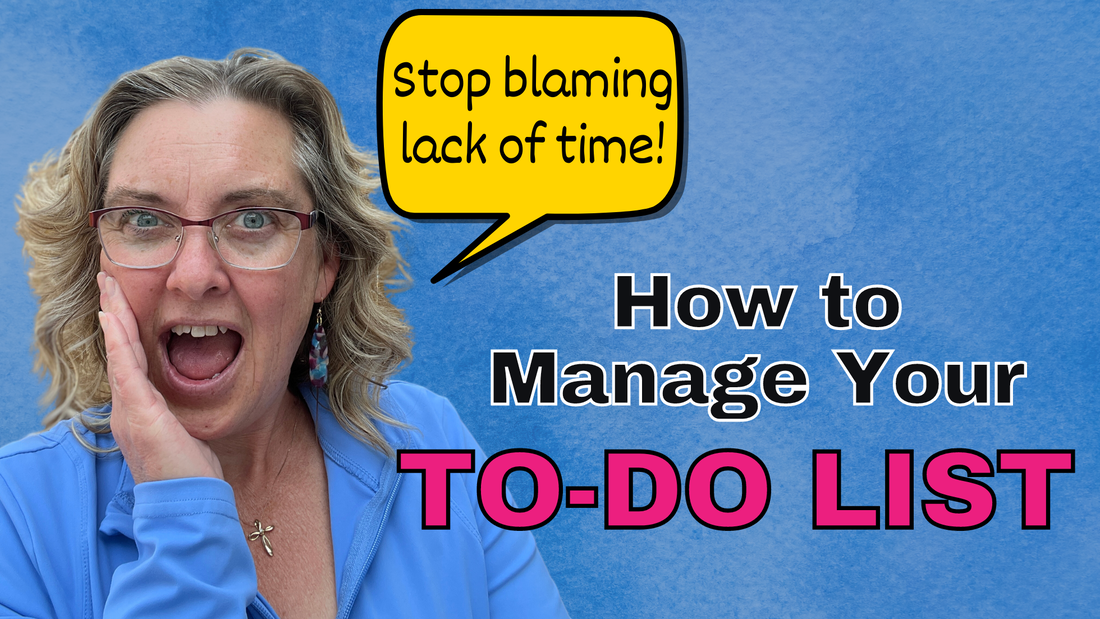
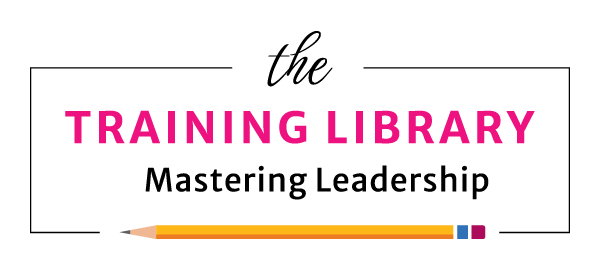
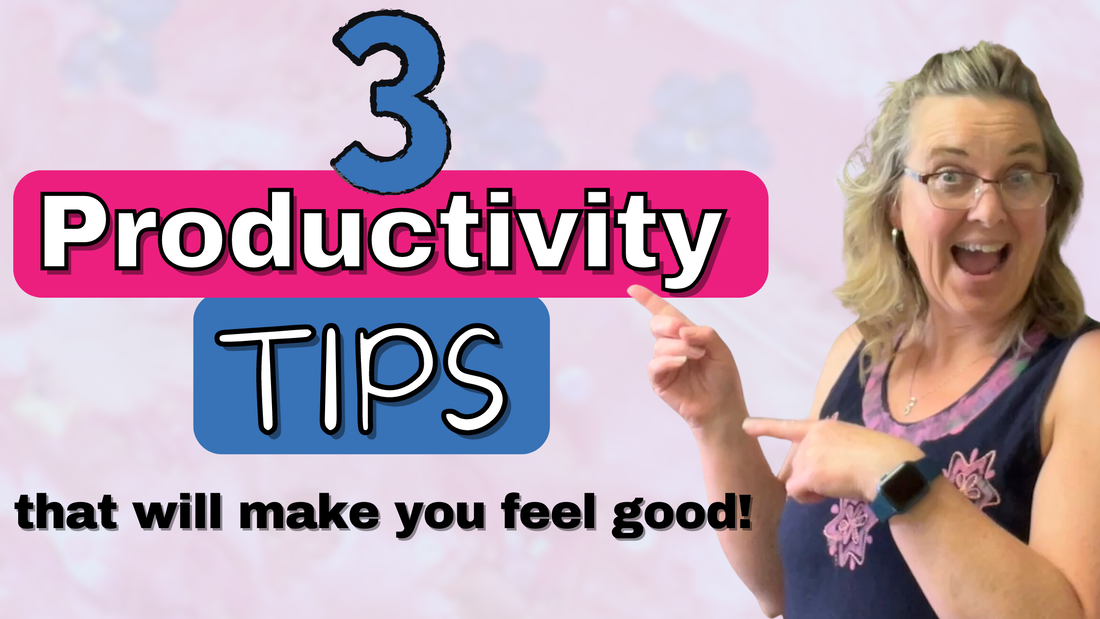
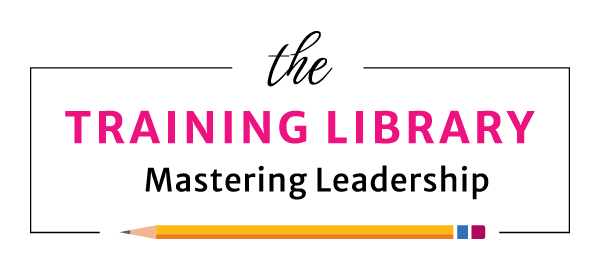


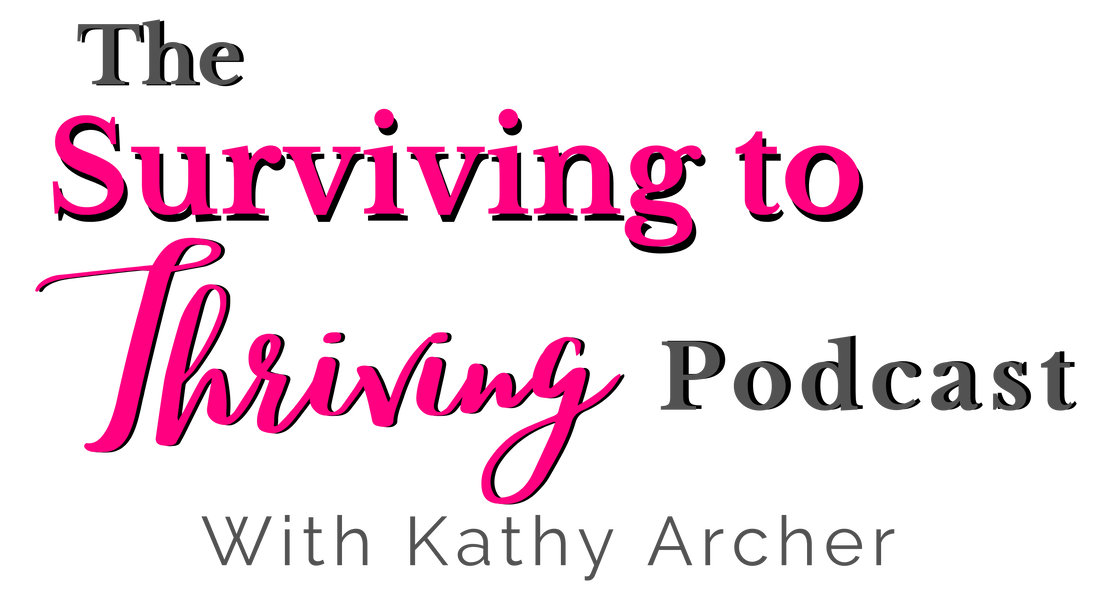
 RSS Feed
RSS Feed
